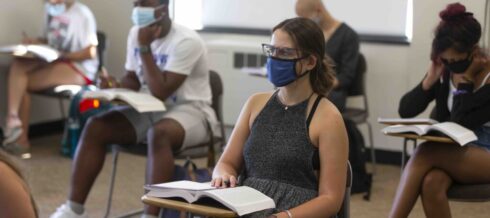
While many of us provide a research methods course for our majors, it seems students do not always enter such courses with zeal and enthusiasm. To help my students better relate to the material, when I remotely teach our research methods course this fall, our first assignment will focus on researching the self: a preliminary investigation. What better topic to conduct research on than on oneself?
Introspective examination
An important piece of a research methods course is becoming self-aware – reflexive – by examining one’s personal interests and motivations for doing research. To develop this awareness, students will create three lists: interests/hobbies that define me, goals/dreams that define me, and challenges that define me. After exhausting each list, they will circle the top three defining qualities in each list.
Instrumental assessment
A big part of any research methods course is applying appropriate instruments to measure things of interest. For this step, to better understand themselves students will find a free instrument to assess a trait about themselves such as the Myers and Briggs or the BuzzFeed Cupcake Quiz, noting some instruments are more credible than others. After taking and reading the results, the students write observations about what the instrument provides in understanding themselves.
Qualitative Reviews
Gathering qualitative data via interviews is a common practice in this course. Students identify three people who know them well. Next, they craft three questions that would provide valuable insight into who the students are: How would you describe who I am? How have you seen me change over time? The students then conduct interviews with these people based on these questions and record their responses.
Video creation
Armed with a wealth of information from these three methods, students now have a better understanding of themselves. To analyze these findings, students create a 1-2 minute video about themselves based on their research (this video is made available to the whole class).
Not only does this assignment introduce students to methods for gathering data; it also primes them to consider how they can better understand themselves and, with such understanding, think constructively about what research topics may align best with their personal interests and intentions. Furthermore, it allows opportunities for students to connect with others via the video productions resulting from their investigations. Lastly, the assignment provides a basis for discussing how one subject can be explored through different methods, all of which reveal different kinds of results. This awareness is important for students to recognize how the methods we choose for our research inevitably shape the nature of our findings.

Laura Russell
Associate Professor
Chair of Communication
Communication/Narrative Journalism/Global Health
